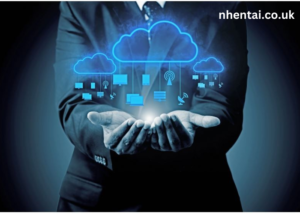The Rise of IoT: Transforming the Way We Live and Work
The Internet of Things (IoT) is a rapidly growing technology that has been around for years but is now beginning to gain widespread acceptance. IoT has the potential to revolutionize the way we live and work by connecting everyday items to the internet. As technology advances, we are seeing an increase in the number of devices that are connected to the IoT. From smart homes to connected cars, the possibilities are endless. In this blog, we will explore the potential of IoT, the benefits and challenges of the technology, its impact on businesses, and the security and privacy issues around it. Finally, we will discuss how organizations can prepare for the future of IoT.
What is IoT?
The Internet of Things, or IoT, is a network of physical objects or “things” that are connected to the Internet. These objects can be anything from appliances to vehicles and even wearable technology. These objects are able to transmit data and communicate with other devices on the network. The data is then used to control the connected device or to provide information to the user. For example, a smart refrigerator might be able to detect when its contents have expired and alert the user.
Benefits and Challenges of IoT
The Internet of Things has the potential to create a number of benefits for businesses and consumers alike. IoT allows businesses to collect data in real time, allowing them to make better decisions faster. Additionally, IoT can be used to automate processes, which can lead to increased efficiency and cost savings.
However, there are also challenges with IoT. One of the main challenges is the security and privacy of the data being collected. As more devices are connected to the network, the data being collected can become vulnerable to attack. Additionally, as the technology evolves, it is important to ensure that the data is properly protected and that users’ privacy is maintained.
IoT and Businesses
IoT has a number of applications for businesses. IoT can be used to monitor and control equipment, providing greater visibility into operations. Additionally, IoT can be used to automate processes, eliminating manual labor and increasing efficiency. Additionally, IoT can be used to gather data in real time, allowing businesses to make informed decisions faster.
The Impact of IoT on Our Lives and Work
The Internet of Things has the potential to revolutionize the way we live and work. It can be used to automate mundane tasks and create a more connected world. For example, IoT can be used in the home to automate tasks like turning off lights or controlling the thermostat. Additionally, IoT can be used in the workplace to monitor employee productivity or to automate processes like inventory management.
Security and Privacy Issues Around IoT
As the number of connected devices increases, so do the potential security and privacy risks. As data is shared across the network, it is important to ensure that it is properly secured and that users’ privacy is maintained. Additionally, it is important to ensure that the data collected is not used for malicious purposes.
Preparing for the Future of IoT
The Internet of Things is quickly becoming an integral part of our lives. As the technology evolves, it is important for organizations to prepare for the future. This includes creating strategies to protect data, ensuring user privacy, and developing processes for securely connecting devices to the network. Additionally, organizations should consider investing in new technologies that can help them take advantage of the opportunities presented by IoT.
Conclusion
The Internet of Things has the potential to revolutionize the way we live and work. From connected homes to smart factories, the possibilities are endless. As technology advances, it is important to ensure that data is properly secured and that users’ privacy is maintained. Additionally, organizations should consider investing in new technologies that can help them take advantage of the opportunities presented by IoT. With the right strategies in place, organizations can prepare for the future of IoT and take advantage of the many benefits it has to offer.














Post Comment